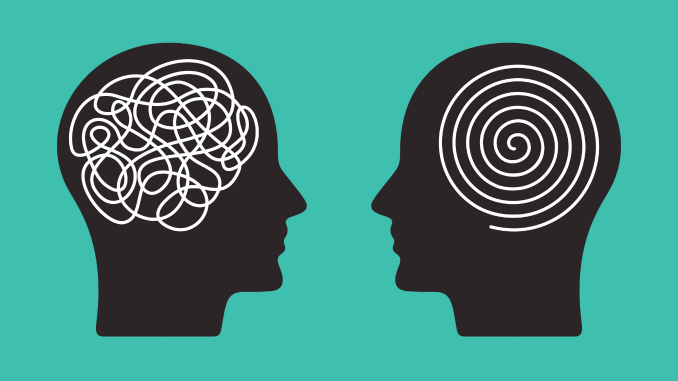Why Doesn’t Anyone Get Me?
07/11/2019
By Molly Rose Teuke
It’s pretty simple, pretty obvious: that people’s first impressions of people are really a big mistake. —Vincent D’Onofrio, American Actor
In his book, “A User’s Guide to the Brain,” Dr. John Ratey writes, “There are more possible ways to connect the brain’s neurons than there are atoms in the universe.”
Which means that no two brains are alike.
Given the vastly different ways our brains process input, it’s not surprising that no two people will see us in quite the same way. Yet, we think others see us as we see ourselves.
At a conference a few years ago, the woman I had invited to be the keynote speaker greeted me with the usual “How are you?”
“Great,” I replied, “I’m so happy this is finally happening.”
“Really?” she asked, obviously skeptical.
“Yes, of course!”
“Well,” she said, “your face hasn’t caught up to how you’re feeling.”
Psychologists call this the transparency illusion. We believe others are reading us accurately, and they seldom are. Why not, and what can we do about it? It isn’t just whether we’re presenting an appropriate facial expression. It has far more to do with the other person than it does with us.
QUICK VERSUS THOUGHTFUL IMPRESSIONS
Our brains are what neuroscientists call cognitive misers. They process input in the quickest and simplest way possible rather than spend valuable cognitive resources on more sophisticated process- ing. That leads to what Daniel Kahneman, a psychologist and Nobel Prize winner for his work in behavioral economics, describes as two systems of thinking.
When a driver cuts me off in traffic, my System 1 thinking labels him a jerk. If I can engage my System 2 thinking, I might conclude he’s on his way to a hospital or is distracted because he just got laid off—or any number of scenarios that might explain his rude driving.
System 2 thinking takes effort. We have to stop and think instead of cruising on mental autopilot. System 2 thinking might lead you to conclude, “I would have done the same thing under the circumstances,” or “Anyone would react that way.” Yet, it takes effort to get there, and so we continue being misunderstood and misunderstanding others.
DON’T TAKE IT PERSONALLY
People seldom misunderstand us intentionally. They’re simply using the shortcuts the cognitive miser between their ears requires. When we meet someone for the first time, we’d be astonished by the assumptions that person is making about us. And yet, we do it, too. We all evaluate one another automatically, drawing on assumptions that have to do with stereotypes or other categories we put people in based on often-irrelevant details like dress, job title, age, height or weight, posture, how they walk, the way they smile—even how white their teeth are. There is no detail too small for your brain to make a judgment around. Every brain does it, and yours is no exception.
BIAS
In his book “Thinking, Fast and Slow,” Kahneman explores countless ways our quick thinking is flawed, primarily because of systematic errors we make in judgment—errors he calls biases. Heidi Grant, author of “No One Understands You and What to Do About It,” says, “If you have a brain, you’re biased.” Let’s look at some of the more common biases we use in evaluating one another.
Confirmation bias. People see in you what they expect to see. If they expect you to be dull-witted, or smart, or funny, or rude, or kind, that’s what they’ll see, whether there’s evidence for it or not. And they won’t have a clue that they’re doing it. (Nor will you, even though you’ll be doing it, too.) Confirmation bias comes from stereotypes, cultural experiences, how closely you resemble someone else they know and their past experience with you. You will have to work very hard to overcome someone’s confirmation bias.
Correspondence bias. We attribute behaviors to the person acting, not to circumstances that might have led anyone (even us) to that behavior. To get past this bias, we have to hope people get past their System 1 thinking.
Halo effect. We assume that people who have one good quality (attractiveness, intelligence, kindness, etc.) will have many good qualities. We give them the benefit of the doubt. By the same token, people who have one negative characteristic probably have many. This bias makes it worth adhering to the old adage, “Put your best foot forward.”
LENSES
Grant suggests there are three key lenses through which we see one another. First is the trust lens. Are you friend or foe? Do you convey warmth as a human being? Will you care about me and look out for me? Bottom line: Can I trust you? There are some obvious ways to convey that someone can trust you. Make and maintain eye contact. Smile. Stay focused on the conversation and nod to indicate understanding. Checking your texts during a conversation puts a pretty big crack in the trust lens. Paying attention with care will make you seem trustworthy to the other person.
Research at the University of Pennsylvania suggests that simply appearing happy versus unhappy, easy-going versus finicky, authentic versus superficial, helpful versus critical, can strengthen someone’s impression of you as trustworthy.
Second is the power lens. This one feels a bit cynical, but Grant says that people who have more power than you do see you primarily through the lens of “Can you be instrumental to me and my goals?” Don’t tell a powerful person how much you admire him or her. Instead, consider how you might be of service and do your best to convey that. Otherwise he or she might not give you a second thought. Highlighting shared goals and how you can help achieve them can make people notice you. Think about the other person’s agenda and convey that this is your agenda, too. It will make you memorable instead of inconsequential. This can be especially helpful when you’re asking someone to do something for you (like hire you). The key is to do it with sincerity or you won’t pass the trust test.
Third is the ego lens. We all want to know that we’re higher in the pecking order than others. You can manage that lens by being modest and by emphasizing that you’re on the same side. In other words, your successes can be shared by the person who can bask in reflected glory instead of being made to feel inadequate. Anything you can do to be seen as a support rather than a threat to someone’s status will help you get past the ego lens.
Being aware of the biases and lenses through which others perceive you can give you a fighting chance of making a good impression. And it just might help you perceive those you encounter as they really are, not just the way your cognitive miser judges them. It seems only fair.











